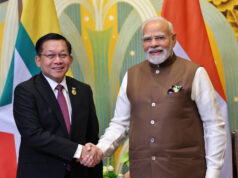The fine print of the LAC disengagement agreed upon by India and China is yet to be out but Foreign Secretary Vikram Misri has given some details of the agreement that was clinched “very early” on Monday.
Patrolling At Depsang And Demchok
India’s big ask for the last two years—restoring patrolling rights in Depsang and Demchok—has been achieved after prolonged military-diplomatic talks. “In the pending areas (Depsang and Demchok) under discussion, patrolling and indeed grazing activities, wherever applicable, will revert to the situation as it obtained in 2020,” said Misri.
Pragmatism, Step-By-Step
The agreement was reached early on Monday, an indicator that talks were on through Sunday night too. India had long been pressing for complete disengagement along the LAC to be the first of the ‘3-D’ process. So now the first D has been done.
The whole process though needs a step-by-step approach laced with a dose of pragmatism, considering India’s experience in the last four years.
So when Misri was asked about the other two Ds (de-escalation and de-induction), he gave a practical response. “For now, we are focused on disengagement first, and discussions on de-escalation and de-induction will happen at the appropriate time.”
Earlier Disengagement Agreements
As far as previous disengagement agreements are concerned, those were not reopened in these discussions, the foreign secretary said. So agreements on disengagement at Gogra, Hot springs, north & south bank of Pangong Tso remain intact. From here on, both the armies will watch each other’s actions before a new modus vivendi is found for managing the border.
Rebuilding Trust
The clash between Indian and Chinese troops at Galwan was a game-changer in more ways than one, when it comes to bilateral ties. Since then, trust has been a big casualty.
Will this latest agreement ensure no more clashes along the LAC?
India hopes that the arrangements that have been worked out are such that they can prevent the kind of clashes that occurred earlier.
“We will need to monitor this closely and continue to make efforts to ensure that the mechanisms and agreements are such that these clashes can be avoided,” said Misri.
As Modi and Xi meet, they may need to guide interlocutors towards rebuilding trust in an already fraught relationship.
A Realistic Approach
India’s approach towards managing the conflict with China has been realistic. India is part of the Quad but unlike the other three constituents of the bloc, it has a long unsettled boundary with China. So while it’s important to stand up to any Chinese aggression at the borders, it’s also prudent not to get swayed by those who have prickly ties with the dragon but are located far away from its shores.
Nitin A. Gokhale is a media entrepreneur, one of South Asia's leading strategic affairs analyst and author of over a dozen books so far on military history, insurgencies and wars.
Starting his career in journalism in 1983, he has since led teams of journalists across media platforms.
A specialist in conflict coverage, Gokhale has covered the insurgencies in India’s North-East, the 1999 Kargil conflict and Sri Lanka’s Eelam War IV between 2006-2009.
Gokhale now travels across the globe to speak at seminars and conferences, and lecture at India’s premier defence colleges. He has founded three niche portals, Bharatshakti.in, stratnewsglobal.com and Interstellar.news.




